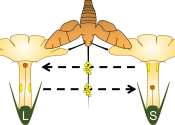Q&A with entomologist: Fewer bees and other pollinating insects lead to shrinking crops
Many plants, from crops to carnations, cannot bear fruit or reproduce without bees, beetles, butterflies and other insects to pollinate them. But the population of insect pollinators is dropping in the U.S., due in part to ...









